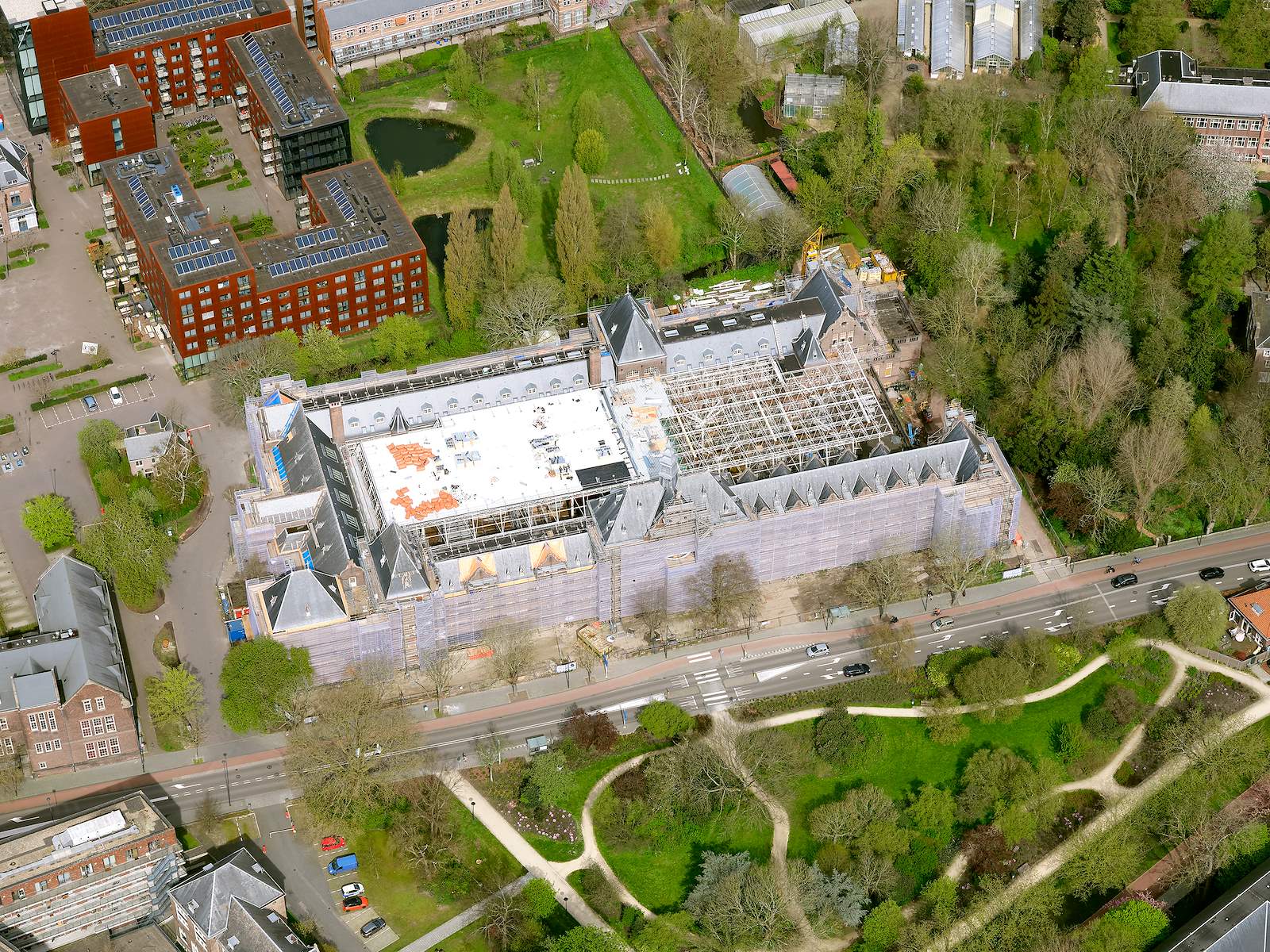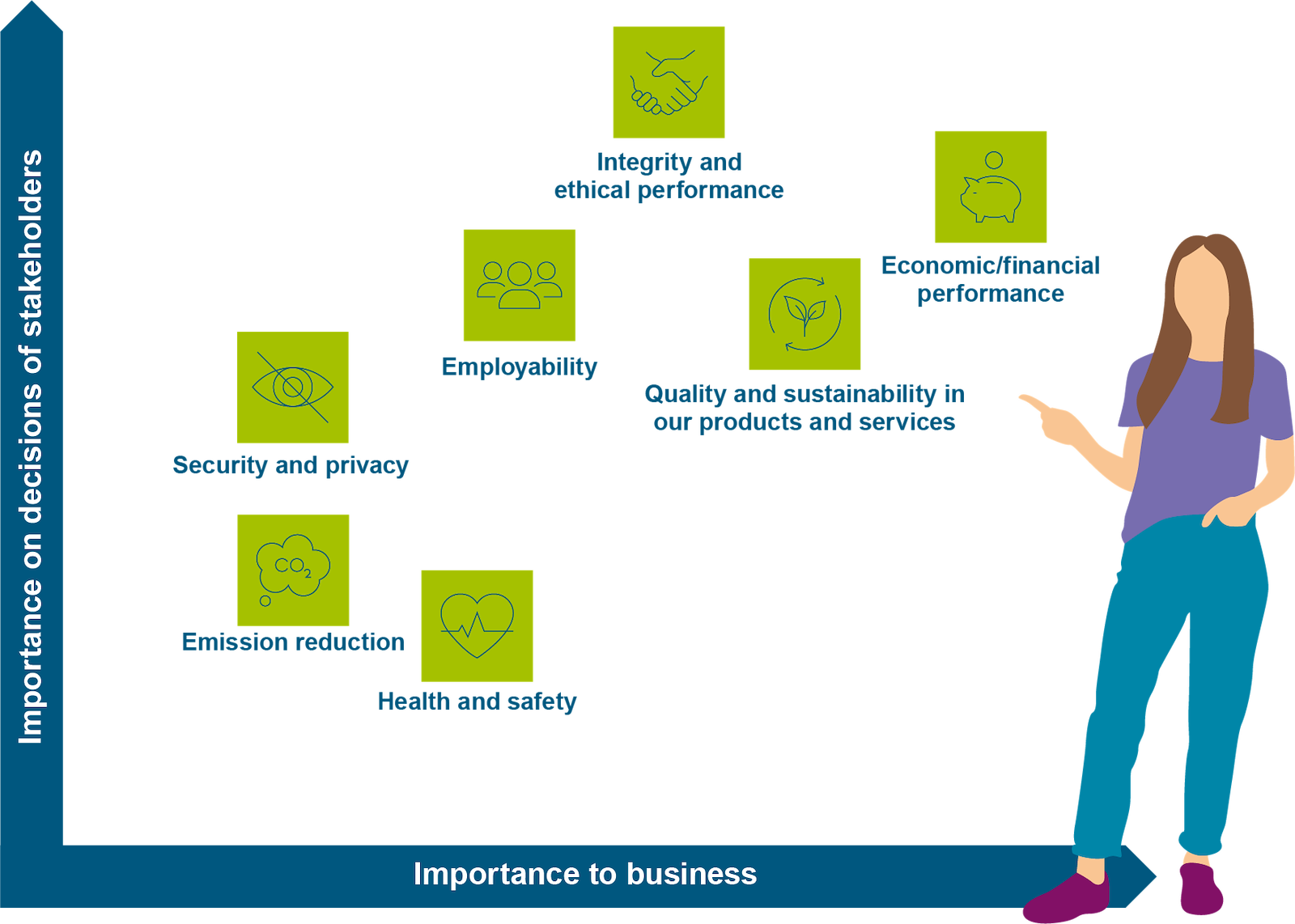Sustainability Performance
Our purpose, Enhancing Society Together, drives us to achieve positive environmental and social impact through our projects and within our own organisation. We are accelerating progress towards climate change goals, safeguarding communities and global biodiversity together with our people, our clients and our partners. We are reducing the environmental impact of our own operations and incorporating principles of inclusion, equality and healthy work-life balance within our ways of working. We remain ahead of targets on emission reduction in our operations.
We were proud to be awarded an EcoVadis Platinum rating for the first time in 2024. The rating places us in the top 1% of all the companies assessed by EcoVadis, a global leader in business sustainability assessments. It reflects the quality of our sustainability management system and our commitment to promoting transparency throughout the value chain. We received full scores for our actions and measures across the four core themes of the assessment: environment, labour & human rights, ethics and sustainable procurement.

Particular praise was given for our explicit assessment of the sustainability performance of our projects, communicating our progress towards the UN’s Sustainable Development Goals, and our ‘exceptional’ policy on major environmental issues.
The 2024 environmental and social information presented in this chapter is not audited, except for the 2024 CO2 emissions that have been verified according to ISO 14064-1 by DNV. In 2025 their ‘Verification Statement Carbon Footprint 2024' is under review for Royal HaskoningDHV.
How are we Enhancing Society Together through our projects?
Our commitment to sustainability is central to our purpose, stated and reinforced through everything we do and evidenced with metrics and key performance indicators. We record positive impact in our projects across 5 Enhancing Society Together (EST) themes where we believe we can make the biggest difference. These are climate change, biodiversity & natural systems, resources & circularity, social value & equality, and safety & well-being. They are aligned with 13 selected UN Sustainable Development Goals which inherently benefit from our activities. Examples from our projects can be found throughout this report.
Sustainability theme | Connected UN Sustainable Development Goal |
Climate change | 7 – Affordable and clean energy |
13 – Climate action | |
Biodiversity & Natural systems | 14 – Life below water |
15 – Life on land | |
Resources & Circularity | 6 – Clean water and sanitation |
12 – Responsible consumption and production | |
Social value & Equality | 4 – Quality education |
5 – Gender equality | |
8 – Decent work and economic growth | |
9 - Industry, innovation and infrastructure | |
11 – Sustainable cities and communities | |
Safety & Well-being | 3 – Good health and well-being |
All | 17 – Partnerships for the goals |
Communication to ensure a shared understanding about our purpose is vital. In 2024, we expanded our Enhancing Society Together Academy. New training materials were developed across each of our 5 themes to support our colleagues in challenging teams and clients to pursue more sustainable solutions. Our Enhancing Society Together Leads worked closely with leading market teams to increase the exchange of ideas and innovation. We shared progress to maintain focus and increase impact. By recording and reporting our successes as well as challenges faced, we were able to communicate impact more effectively. We significantly increased the number of projects evaluated, thereby strengthening the baseline for assessing future performance. The data we generate enables us to manage and target our activities to accelerate delivery on our purpose.
To view the image in full screen for better readability, please click icon on the right corner at the bottom.
You can hover over the visual to read more information.
The interactive content below might not be fully accessible.
This chart shows the areas where we believe we can make the biggest impact in delivering benefits for people and planet, aligned with the UN Sustainable Development Goals. We assess our impact as follows: -1 for negative, 0 for neutral, +1 for positive and +2 for very positive.
In 2024 our ‘score’ across our portfolio increased from 3.22 at the end of January to 3.34 at the end of August. During the last part of the year, we began to include assessments of our smaller projects – still very much EST-aligned but where on average there is less opportunity to deliver the more significant benefits. This resulted in a steep increase in assessments, from around 800 projects to around 2,400 at the end of the year (2023: 1,117 projects), representing over 65% of our annual revenue. However, we saw did see this dilute the overall EST score to 2.7 in December.
Structure and Governance
Our ownership structure is important for our ability to align our commercial development with our purpose and deliver on our sustainability goals. As an independent organisation, partly- owned by employees, we have more room for social impact, innovation and professional autonomy – prioritising our independence and long-term purpose over profit maximisation.
Our robust governance structures ensure transparency and accountability. Sustainability is embedded into our core operations ensuring that our efforts benefit stakeholders and contribute to global sustainability goals. Our purpose is central to our strategy which ensures strong support at executive level. Sustainability is integrated into our activities, led by senior management from strategy to delivery. Our Purpose Matrix is incorporated within project delivery, project governance and proposal stage governance systems. It is being used in conversations with clients to promote and encourage further impact.
Sustainability in our operations
Sustainable procurement
A significant proportion of our social and environmental impact comes from our supply chain. Within our operations, we choose suppliers that mirror our high standards on environmental and social sustainability and transparency. Our teams are trained in sustainable procurement, enhancing their ability to manage contracts responsibly and align our procurement processes with sustainability best practices. Our tender process ensures our commitment to sustainability is reflected in supplier selections. Decisions for large contracts are based on information from suppliers in respect of all five themes of Enhancing Society Together. We challenge suppliers and stakeholders to constantly reduce the impact of their products and services and to identify where materials and equipment can be reused and repurposed.
Offices
The 2025 opening of our office in the historic building we have renovated in Delft, is an important strategic development for our company. This iconic structure provides a very visible demonstration of our Paris Proof commitments. It brings to life our expertise and innovation in solving the most challenging issues around sustainability and net zero.
It forms part of our undertaking to have a global office network that is Paris Proof by 2035. This involves significantly reducing energy consumption and solely using energy from renewable sources. We are entering into discussions with landlords to achieve this ambition or to move to new locations. Our Enhancing Society Together ambitions now form part of every office move proposal.

In 2024 office moves took place in the United Kingdom, Poland and Peru. Uticon Eindhoven joined our colleagues in our Eindhoven office following the acquisition. In 2025, alongside Delft we anticipate moves to new spaces in Eindhoven in the Netherlands and Noida in India. The main reasons for these office moves are to accommodate growth and to create an inspiring, sustainable environment. Features of these new locations typically include shared facilities such as meeting rooms and reception areas which decrease our overall floor space and energy consumption. We aim to repurpose and reuse existing equipment such as kitchens, flooring, IT equipment and furniture as much as possible. Energy consumption of equipment and appliances is carefully reviewed. Our ambitions are challenged by some external factors outside our control. For example, increased electricity demand associated with the energy transition is putting pressure on grid connections. In some countries, including the Netherlands, this is creating long delays over upgrades to power connections and affects the reliability of power supplies. The benefits of moving to carefully-selected offices is demonstrated by our new space in Mumbai, India which has delivered significant reductions in emissions compared to our previous office space there, following a move in 2023.
IT equipment
In 2024, we reduced our physical IT infrastructure, minimising energy usage and leveraging the scalability and efficiency of cloud-based solutions to enhance our sustainability efforts. We are moving from cabled to Wi-Fi connectivity in our offices globally and limiting the number of local servers and switches, reducing demand for cooling.
Mobility
We operate an electric lease fleet in the Netherlands. In 2024, legacy leases connected with previous acquisitions were also transferred to electric vehicles. An electric vehicle lease scheme operating in the United Kingdom was extended to employees without lease vehicles to encourage decisions to move away from fossil fuels. In 2024, we implemented a tool to register distances driven in lease vehicles in the Netherlands. This will increase the accuracy of our data. We are stimulating the use of bicycles and public transport for commuting. Our new office locations are chosen for close access to transport systems, and we are supporting employees who wish to purchase bicycles in particular locations. In the Netherlands, our employees are recording data about their daily commuting methods and distances so we can accurately record reductions in our scope 3 emissions over coming years.
Reporting on our material topics
We are preparing to report in compliance with CSRD Regulations from 2025.
In 2024 we performed a double materiality analysis, following requirements in the European Sustainability Reporting Standards. We created a core team of internal experts to identify relevant impacts, risks and opportunities. We engaged with a diverse range of our key stakeholders and internal experts through surveys, interviews and feedback sessions. After reviewing feedback from these engagements together with relevant sustainability matters and our operating context, we assessed impacts, risks, and opportunities to create an updated list of our material topics.
In 2024, we continue reporting on the seven material themes included in previous reports:
Our updated double materiality analysis will be included in our 2025 Annual Report.

Our financial and sustainability key figures can be found in the Key Figures.